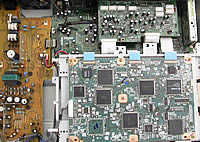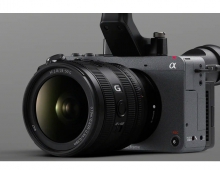Sony HTR-6000
2. The RDR-GX3 recorder
The retail package includes the following:
Audio and Video cables, Power cable, Antenna cable, Remote Control and two R6 batteries (size AA).
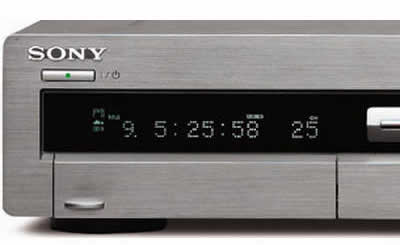
The power button is located on the front in the top left corner of the device. Directly below it is the led display, where various information depending on the device mode, is illustrated. Underneath the led display is a small panel which when opened, reveals more connections (S-VIDEO and Composite Video/Audio, see below).
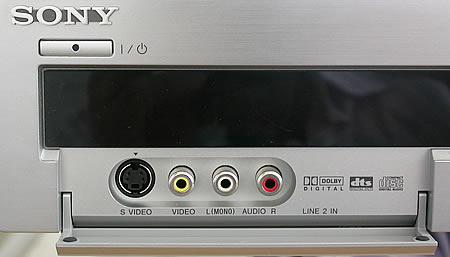

On the right hand side there are several control buttons such as eject, play, pause, stop and record functions. The display underneath the buttons shows information about the Finalized disc, SmartLink, SynchroRec and the Timer. To the right of the display on the far right, there are six more buttons which allow the user to select recording mode, input and program setup.


Looking at the rear of the device we find all the input output connections. To the right of the i/o connections is the fan outlet to keep the device cool.

It is highly recommended that the cover NOT to be removed, so below is an inside view of the device along with some photos of the more important chipsets.
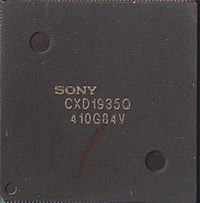 |
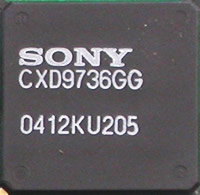 |
 |
 |
 |
 |
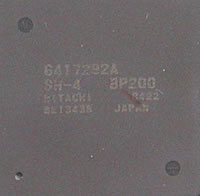 |
|
The NEC chipset is an MPEG2 Encoder with Dolby Audio Encoding.
The TL751 chipset is a Graphics processor for Personal Video Recorders, DVD, Digital STB and Internet TV applications.
The TL751 chipset provides advanced functionality such as fast response time to display graphics-rich content, high quality graphics and video capabilities to perform seamless integration of video and multimedia graphics content and easier navigation through the menu objects. A 32-bit hardware accelerated graphics engine performs fast rendering of onscreen menus and internet content and supplies 32-bit color depth for true color graphics. Alpha bending (129 levels) provides transparent graphics overlay for video/studio-like effects including fading in/out. A multi-tap anti-flicker filter creates readable text and graphics on interlaced displays. Scalable windowing enables picture-in-picture (PIP) and picture-in-graphics (PIG) functions. A hardware cursor controls the easy navigation of menus and internet-driven push content on the TV. All of the above functionality provide a compelling user experience.
The TL751 interfaces have been designed as such to reduce problems to key components ( MPEG Decoder, CPU, etc. ) and to try to keep the parts count on the system to a minimum. The TL751 offers a unified memory system allowing the CPU and the TL751 chipset to share the same memory whereby reducing the amount of memory required from the system. The TL751 interfaces to all existing standard definitions and enables migration from a basic Set-Top Box to a higher-end, graphics-rich advanced Set-Top Box or Personal Video Recorder. The TL751 is also capable of interfacing with RISC type CPUs' such as EmbeddedMIPS, StronARM, STMicroelectronic's ST20, Hitachi's SH Series, Motorola 68K, Toshiba Hawk, PowerPC and others
More detailed information on the Hitachi SH-4 chipset is found in the table below :


With the remote control, you can fully operate the recorder and optionally operate a TV set. When you open the slide cover on the remote control, you will find the record mode buttons. While with the setup button, the command mode can be changed.



